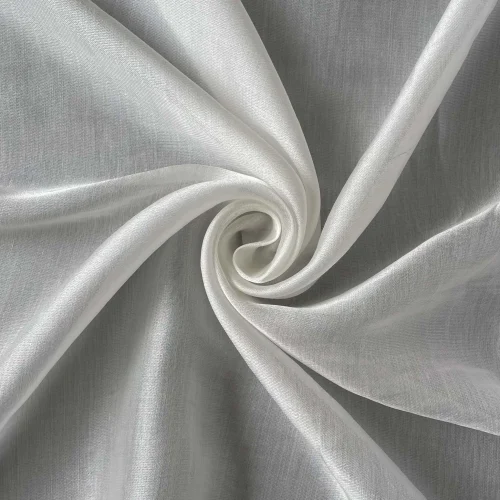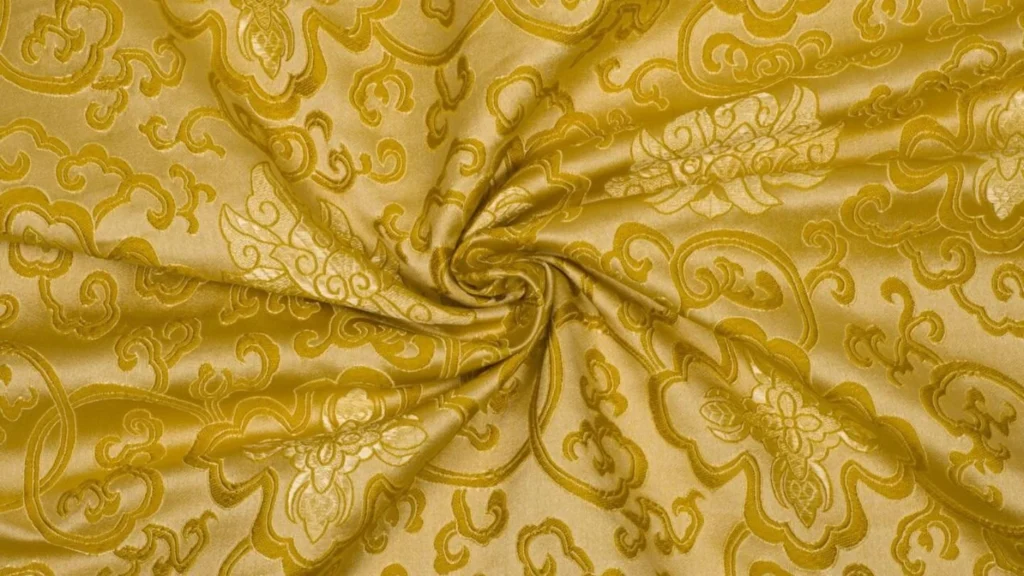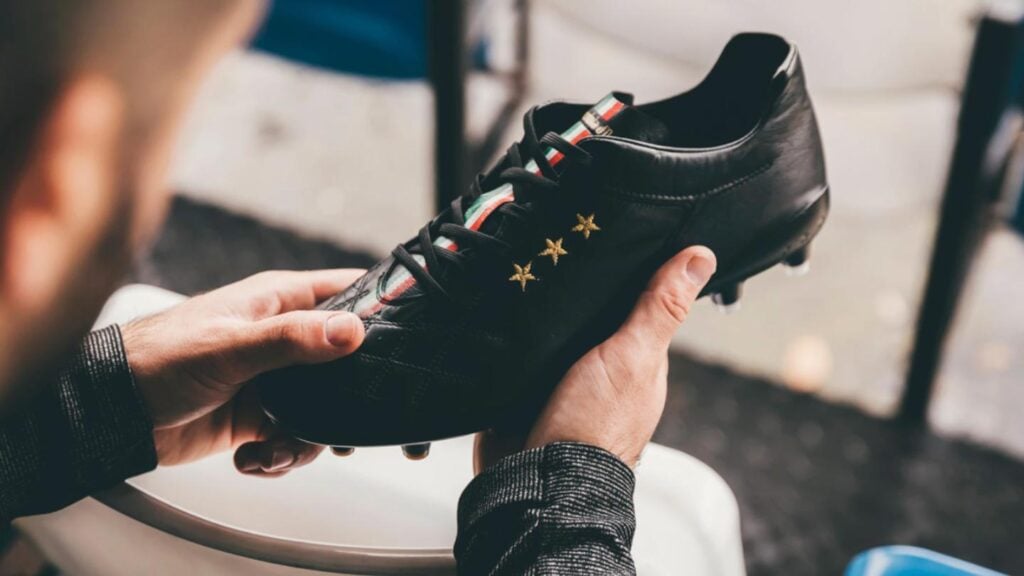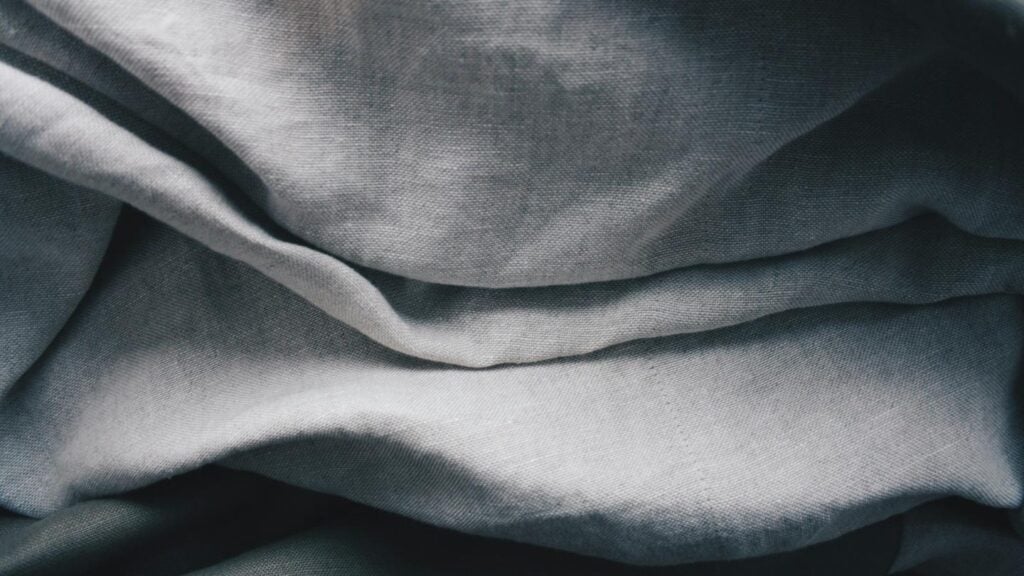2 – Benefits of Choosing Organdy Fabric
3 – Organdy Fabric vs Other Fabrics
4 – How Organdy Fabric Is Manufactured
5 – Common Uses in Fashion
6 – Understanding the Environmental Impact of Organdy Fabric
7 – Exploring Price Points and Value for Money
8 – Conclusion
9 – FAQs
What is Organdy Fabric?
Organdy fabric is a lightweight, sheer, and crisp textile that is often used in high-fashion garments, accessories, and home décor items. Known for its delicate texture and ability to hold structure, organdy is a type of woven fabric typically made from cotton, although it can also be produced using synthetic fibers like polyester. Its sheer appearance and crisp finish make it a popular choice for creating voluminous garments such as evening gowns, bridal dresses, and decorative elements like curtains or tablecloths.
Historically, organdy was developed in the 17th century in Europe, with its roots traced back to the French word “organdis,” which refers to a type of fine silk or cotton. Initially, it was made from silk, but over time, cotton became the most common material due to its availability and affordability. The fabric is characterized by its fine, lightweight threads, which are tightly woven to create a slightly stiff texture. When treated with a starch or other stiffening agent, organdy retains its structure, making it ideal for designs that require a crisp, sculptural form.
Key features of organdy fabric include:
- Lightweight and Sheer: Organdy is known for its airy and translucent qualities, giving garments a soft and delicate appearance.
- Crisp and Structured: Its ability to hold shape is one of the fabric’s most sought-after qualities, perfect for voluminous skirts and puffed sleeves.
- Durability and Strength: Despite its delicate appearance, organdy is relatively strong and resistant to wear, especially when compared to other sheer fabrics.
- Versatility: Organdy is often used in a wide range of applications, from couture fashion to bridal wear, and even in interior design.

Benefits of Choosing Organdy Fabric
Organdy fabric offers several advantages, making it a popular choice for designers and consumers alike. Here are some key benefits:
- Lightweight and Airy: Organdy is incredibly light, giving garments a soft, delicate feel without adding bulk. Its sheer quality enhances the elegance of any design.
- Crisp and Structured: The fabric holds its shape well, making it perfect for voluminous styles like puffy sleeves, skirts, or dresses. It provides a sculptural quality to designs.
- Versatile: Organdy is adaptable to a variety of uses, from high-fashion garments to home décor items like curtains and tablecloths.
- Durable: Despite its delicate appearance, organdy is surprisingly strong and durable, especially when made from cotton or synthetic fibers. It withstands wear and tear well.
- Breathable: Organdy is breathable, making it a comfortable option for warmer weather, as it allows air to circulate freely.
- Easy to Dye: Organdy takes dye well, offering rich, vibrant colors that retain their intensity over time.
- Timeless Appeal: With its elegant and sophisticated appearance, organdy remains a timeless fabric choice in both traditional and contemporary designs.

Organdy Fabric vs Other Fabrics
When comparing organdy fabric to other popular textiles, its unique characteristics make it stand out in specific design contexts. Here’s how it measures up against some other fabrics:
- Organdy vs Organza:
- Both fabrics are sheer and lightweight, but organza is slightly softer and more flexible than organdy. While organdy retains more structure and crispness, making it ideal for voluminous designs, organza is often used for delicate, flowing gowns. Organdy’s finish is more rigid, whereas organza tends to drape more fluidly.
- Organdy vs Tulle:
- Tulle is another sheer, lightweight fabric but is typically softer and more delicate than organdy. It has a finer weave and a more flexible structure, making it ideal for soft layers in skirts or veils. Organdy, in contrast, holds a firmer shape and is better for structured elements in designs like collars or petticoats.
- Organdy vs Cotton Voile:
- Cotton voile is soft and lightweight, much like organdy, but lacks the crisp finish. Voile is often used for casual, comfortable garments due to its breathability, while organdy’s stiffness and ability to hold shape make it better suited for more formal, structured designs.
- Organdy vs Silk:
- Silk offers a luxurious, smooth texture and natural sheen, but it is more delicate and requires more maintenance than organdy. While silk has a soft drape, organdy holds its structure, making it a better choice for designs requiring shape retention. Silk is also more prone to wrinkles compared to the sturdier organdy.

How Organdy Fabric Is Manufactured
The manufacturing process of organdy fabric involves several key steps to create its lightweight, crisp, and sheer texture. Here’s an overview of how organdy is made:
- Fiber Selection:
Organdy is typically made from high-quality cotton, though it can also be created using synthetic fibers like polyester. The fibers are chosen for their fine, smooth qualities to ensure the fabric’s delicate texture. - Spinning:
The selected fibers are spun into fine yarns. The yarns used for organdy are usually very thin to create the lightweight and airy quality that defines the fabric. - Weaving:
The yarns are woven using a plain weave technique, where each weft thread passes over and under each warp thread, creating a simple, uniform fabric. The tight weave helps create the structure needed for organdy to hold its shape. - Stiffening or Finishing:
One of the key steps in organdy production is stiffening the fabric. This is done by applying a starch or other stiffening agent during the finishing process. The application of this stiffening agent gives organdy its signature crisp texture and structure, helping the fabric retain its shape. - Dyeing:
Organdy fabric is dyed to achieve rich, vibrant colors. Due to its fine, smooth texture, organdy takes dye well and holds color consistently. It can be dyed in a range of colors to suit different fashion and design needs. - Final Treatment:
After the fabric is dyed, it is treated to enhance its durability. Organdy undergoes a final heat-setting process to ensure the stiffened texture remains intact. This step also helps set the fabric’s shape.

Produce your fashion collection with us
Common Uses in Fashion
Organdy fabric is highly prized for its unique combination of lightness and structure, making it a favorite choice in various fashion applications. Here are some of the most common uses of organdy in fashion:
- Evening Wear: Organdy is often used for ball gowns, cocktail dresses, and bridal gowns due to its ability to create dramatic volume and shape. Its crisp texture holds structure well, making it ideal for voluminous skirts and dresses.
- Bridal Wear: Organdy’s sheer, delicate nature is perfect for bridal veils, dresses, and accessories. Its ability to maintain a crisp silhouette enhances the romantic and elegant feel of bridal attire.
- Special Occasion Dresses: The fabric is commonly used for prom dresses, flower girl dresses, and other formal wear where a structured yet lightweight material is needed to create a graceful and elegant look.
- Sculptural Elements: Organdy is frequently incorporated into fashion designs that require sculptural or architectural elements, such as ruffles, puff sleeves, and bows. Its ability to hold its shape makes it an excellent choice for these types of designs.
- Accessories: Organdy is used in fashion accessories like purses, clutches, and scarves, where its lightweight and structured properties add a touch of sophistication without adding weight.
- Trimmings and Embellishments: Organdy is often used for embellishments like collars, cuffs, and lace details on garments. Its sheer quality allows it to be layered over other fabrics, adding texture and dimension to a design.

Understanding the Environmental Impact of Organdy Fabric
Like many fabrics, organdy’s environmental impact varies depending on the materials and processes used in its production. Here’s an overview of the key factors influencing the environmental footprint of organdy fabric:
- Material Source:
- Cotton Organdy: While cotton is a natural fiber, conventional cotton farming uses large amounts of water, pesticides, and fertilizers. Organic cotton is a more eco-friendly alternative, as it avoids harmful chemicals.
- Synthetic Organdy: Made from fibers like polyester, which are derived from petroleum, synthetic organdy is non-biodegradable and contributes to plastic pollution.
- Manufacturing Process:
- The production of organdy, including spinning, weaving, and finishing, consumes significant energy, potentially contributing to carbon emissions. The stiffening process often uses chemicals that can cause pollution if not managed properly.
- Dyeing and Finishing:
- The dyeing process consumes water and chemicals, with conventional methods releasing pollutants into water sources. Eco-friendly dyeing methods, such as waterless or natural dyes, are more sustainable alternatives.
- Durability and Lifespan:
- Organdy’s durability means it can last a long time if cared for properly, reducing the need for frequent replacements. However, it is a delicate fabric and may require special care to maintain its structure.
- End-of-Life Disposal:
- Cotton Organdy biodegrades over time, but synthetic organdy does not and contributes to microplastic pollution. Recycling is more feasible for cotton-based organdy.

Exploring Price Points and Value for Money
Organdy fabric offers a balance between price and value, which varies based on the material and intended use.
- Cotton Organdy typically falls within a mid-price range, with organic cotton organdy being slightly more expensive due to eco-friendly farming practices and less reliance on pesticides and chemicals.
- Synthetic Organdy is generally more affordable as synthetic fibers, such as polyester, are cheaper to produce. However, while it offers a lower initial price, synthetic organdy may not have the same durability or crisp texture as cotton, which can affect its longevity.
In terms of durability, cotton organdy provides better long-term value. It holds its structure longer and maintains its shape, which is crucial for high-volume or structured designs. Synthetic organdy, while cost-effective, may lose its stiffness more quickly, potentially requiring replacement sooner.
Organdy is especially valuable in formal wear and bridal fashion, where the fabric’s ability to create volume and structure justifies the price. Designers also use organdy in special occasion garments and accessories, like purses and scarves, where its delicate, structured look can elevate the design without a significant increase in cost.
For those focused on sustainability, organic cotton organdy is a higher upfront investment but offers long-term benefits, such as reduced environmental impact and better biodegradability compared to synthetic alternatives.

Conclusion
Organdy fabric is a versatile and valuable choice for fashion, offering a balance of elegance, structure, and durability. While cotton organdy provides long-term value through its sustainability and durability, synthetic organdy offers a more affordable option with slightly less resilience. Whether used for formal wear, bridal designs, or accessories, organdy’s ability to hold shape and create volume makes it a worthwhile investment for high-end designs. By considering the material, application, and sustainability factors, designers can choose the right type of organdy fabric to suit their needs and offer great value for money.
FAQs
- What is organdy fabric?
- Organdy is a lightweight, sheer, and crisp fabric, typically made from cotton or synthetic fibers, known for its ability to hold structure. It is often used in formal wear, bridal gowns, and accessories.
- Is organdy fabric stiff?
- Yes, organdy is known for its crisp texture. The fabric is stiffened during production to maintain its structure, making it ideal for voluminous designs like puff sleeves or skirts.
- Can organdy be used for casual clothing?
- Organdy is generally used for formal wear, bridal dresses, and high-fashion pieces. Its stiff and sheer qualities make it less suited for casual clothing, but it can be used creatively in casual designs when volume and structure are desired.
- Is organdy fabric durable?
- While organdy is durable, it can be delicate, especially if made from cotton. Proper care is needed to maintain its crisp structure. Synthetic organdy tends to be more durable but may lose its stiffness over time.
- Can organdy be dyed?
- Yes, organdy fabric takes dye well and retains vibrant colors. The dyeing process can vary depending on whether the fabric is cotton or synthetic, but it can be made in a wide range of colors.
- Is organdy fabric breathable?
- Yes, organdy is breathable, particularly when made from cotton, making it a good option for warmer weather or special occasions where comfort is important.
- How do you care for organdy fabric?
- Organdy requires gentle care. It should be hand-washed or dry-cleaned to avoid damage. Ironing on a low setting is recommended to maintain its crisp appearance.
- What are common uses for organdy fabric?
- Organdy is commonly used for evening wear, bridal gowns, special occasion dresses, and accessories. It is also used in home décor items like curtains or tablecloths.
- Is organdy fabric eco-friendly?
- Cotton organdy is more eco-friendly than synthetic alternatives. Organic cotton organdy is a sustainable choice, as it uses fewer chemicals and less water in farming. Synthetic organdy, however, is not biodegradable and contributes to plastic pollution.
- How does organdy compare to organza?
- Both organdy and organza are sheer and lightweight, but organdy is stiffer and more structured, while organza is softer and drapes more fluidly. Organdy is ideal for designs that need volume and shape, while organza is often used for more fluid, flowing garments.







